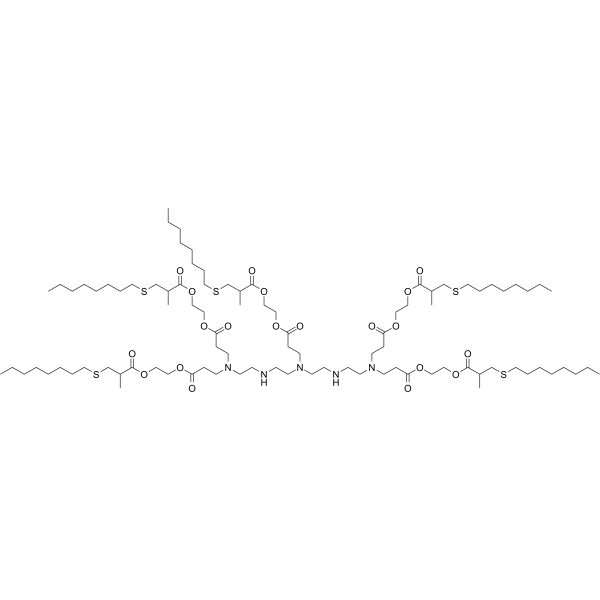| Cas No.: | 1857341-90-2 |
| Chemical Name: | NND-22111102 |
| Synonyms: | 4,7,10,13,16-Pentaazanonadecanedioic acid, 4,10,16-tris[3-[2-[2-methyl-3-(octylthio)-1-oxopropoxy]ethoxy]-3-oxopropyl]-, 1,19-bis[2-[2-methyl-3-(octylthio)-1-oxopropoxy]ethyl] ester |
| SMILES: | C(OCCOC(=O)C(C)CSCCCCCCCC)(=O)CCN(CCC(OCCOC(=O)C(C)CSCCCCCCCC)=O)CCNCCN(CCC(OCCOC(=O)C(C)CSCCCCCCCC)=O)CCNCCN(CCC(OCCOC(=O)C(C)CSCCCCCCCC)=O)CCC(OCCOC(=O)C(C)CSCCCCCCCC)=O |
| Formula: | C93H173N5O20S5 |
| M.Wt: | 1841.72 |
| Purity: | >95% |
| Sotrage: | 2 years -20°C Powder, 2 weeks 4°C in DMSO, 6 months -80°C in DMSO |
| Publication: | Yehui Sun et al. In vivo editing of lung stem cells for durable gene correction in mice. Science, 2024, doi:10.1126/science.adk9428. |

 To enhance service speed and avoid tariff delays, we've opened a US warehouse. All US orders ship directly from our US facility.
To enhance service speed and avoid tariff delays, we've opened a US warehouse. All US orders ship directly from our US facility.




















